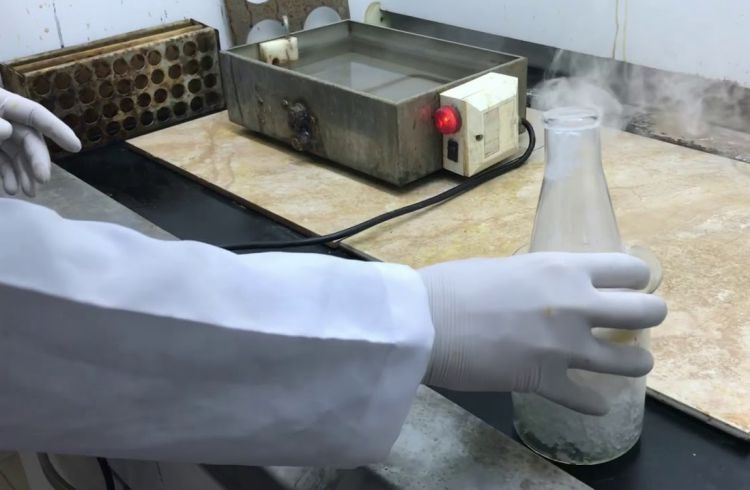 Sulfonyl chlorides, also known as sulfonic acid chlorides, are categorized in the class of sulfonyl halides. These are colorless compounds sensitive to water. They also have a strong odor and are irritating.
Sulfonyl chlorides, also known as sulfonic acid chlorides, are categorized in the class of sulfonyl halides. These are colorless compounds sensitive to water. They also have a strong odor and are irritating.
Sulfonyl chlorides have essential industrial uses. As solvent, sulfonyl chlorides act as catalysts and disinfectants. They can also be used in making other chemicals like insecticides and pharmaceuticals.
Production Of Sulfonyl Chlorides
Sulfonyl chlorides are made in the industry through two steps: chlorosulfuric acid and arene.
When benzenesulfonic acid is chlorinated with thionyl chloride, it forms sulfonyl chlorides. On the other hand, benzenesulfonic chloride can be produced when sodium benzenesulfonate is treated with pentachlorides.
Hydrochloric acid and sulfur dioxide react with phenyldiazonium chloride to form sulfonyl chloride.
These products will react with nucleophiles readily other than water, such as amines and alcohols. If the nucleophile during the reaction will be alcohol, the product will be sulfonate ester. And if it’s an amine, then the product will be sulfonamide.
Sodium sulfate can act as a nucleophile reagent that enables sulfonyl chlorides to convert to form sulfonate salts.
Common Sulfonyl Chlorides
Through industrial processes, chlorosulfonated polyethylene is produced. The process involves chlorosulfonating polyethylene. And because chlorosulfonated polyethylene (CSPE) is challenging, it is used to make roofing shingles.
The essential industrial derivative is benzenesulfonyl chloride. It is formed through various reagents such as brosyl chloride, tosyl chloride, mesyl chloride, and nosyl chlorides.
Other Sulfony Halides
The sulfonyl halide group consists of Sulfonyl chloride and other compounds. It occurs when a sulfonyl group is bonded to a halogen. It will bear the RSO2X formula, where X will represent the halogen atom.
Sulfonyl halides are stable, but their stability decreases in order fluorides to chlorides, to bromides, and then iodides. In this series, sulfonyl fluorides and chlorides are the dominant important.
-
Sulfonyl Fluorides
These have a general formula: RSO2F. Most of these are industrially synthesized perfluorooctanesulfonyl derivatives. That means they will have sulfonyl fluoride to act as their precursor.
On the other hand, Sulfonyl fluorides are essential in the lab because they act as reactive probes in molecular biology. These compounds specifically react with tyrosine, threonine, lysine, cysteine, serine, and histidine.
Sulfonyl fluorides are more resistant than sulfonyl chlorides which makes them best suit for the task.
-
Sulfonyl Bromides
Sulfonyl bromides use a general formula: RSO2Br. Unlike the sulfonyl chlorides, these bromides undergo light-induced homolysis that affordes sulfonyl radicals – easily added to alkenes.
-
Sulfonyl Iodides
Sulfonyl iodides (RSO21) are quite light-sensitive.
Suppose you react iodine and perfluoroalkanesesulfonyl in dichloromethane at – 30 °C forms perfluoroalkanesesulfonyl iodides. But if reacted with alkenes, it forms normal adducts: RFSO2CH2CHIR.
On the other hand, you can use arenesulfonyl iodides to synthesis poly(methyl methacrylate).
The Final Word
Sulfonyl chlorides are part of the reactive sulfonic acid derivatives. They have similar reactivity and properties to carboxylates and acid chlorides. However, the sulfonyl acid group is usually a hindered molecule that contains tetrahedral configurations of substituents.
If preparing sulfonyl chlorides, the process involves sulfonating benzene derivatives with chlorosulfonic acid and sulfuric acid.

